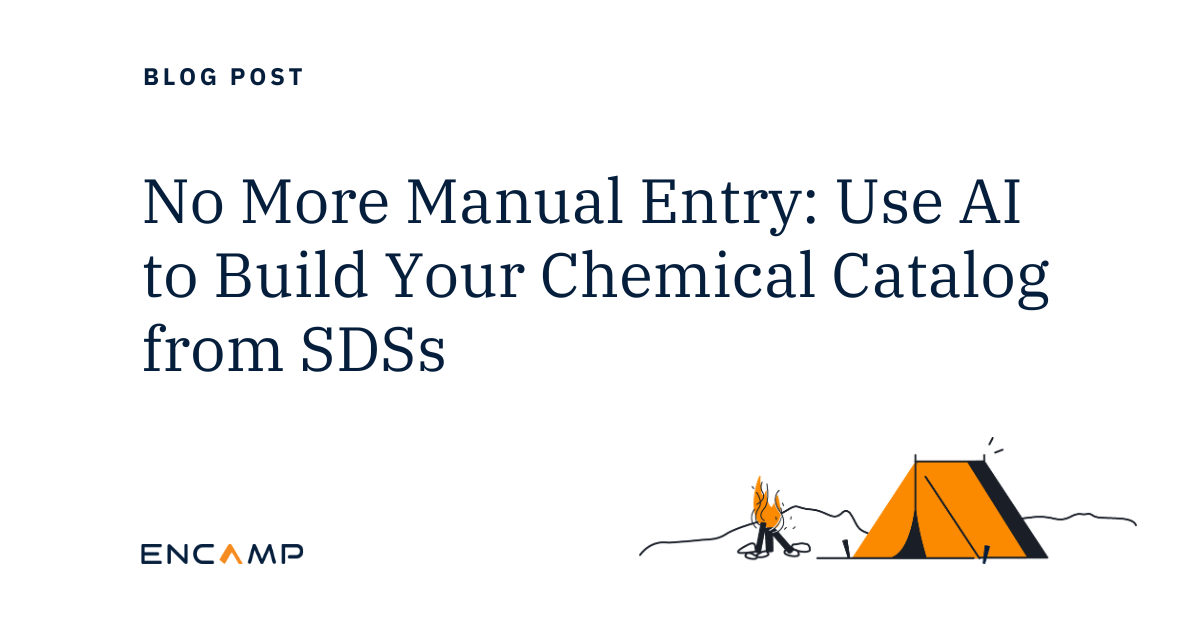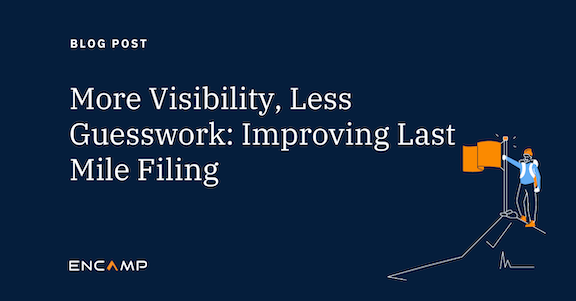“When you start getting into SERCs and LEPCs and their ever-changing requirements (for Tier II reporting), it’s almost impossible to keep up. And if you’re filing Tier II reports in 30 or 40 different states, you’re dealing with 30 or 40 different state systems. You have to figure out a better way to organize that data and information and be able to manage it consistently, repeatedly.” – Denton Bruce, Senior Director of EHS for Bunzl Distribution
Three Takeaways to Make Tier II Reporting Easier
In An Insider’s Look at Tier II Reporting, Denton Bruce from Bunzl, Bob Johnson, Environmental Affairs Manager for Lennox International, and Marilia Sinigaglia, a Customer Service Manager at Encamp, recapped what their 2021 EPCRA reporting year involved and what made it a success. The popular event got direct interest from close to 250 EHS leaders and people in environmental compliance roles.
With Bunzl Distribution maintaining more than 200 facilities across the U.S. and Lennox International operating 250 distribution locations in 40 states, our insiders discussed all the Tier II reporting hurdles they faced for RY 2021 and how they are overcoming them.
Here are the three principal takeaways from the discussion.
Takeaway #1 – Maintain continual compliance throughout the year
Along with the pandemic, constant changes to regulations and verifying their applicability for each facility have forced many companies to change how they manage EPCRA compliance.
Critical new and updated regulations for EPCRA reporting over the years
- Emergency and Hazardous Chemical Inventory Forms and Community Right-to-Know Reporting Requirements, Final Rule. 52 FR 38344. The “initial” final ruling for EPCRA. October 1987
- Community Right-To-Know Reporting Requirements; Final Rule. 55 FR 30632. Finalized all requirements, threshold amounts, and the March 1st submission deadline. Also defined “facility” and added required mixture components and subsurface operations. July 1990
- Emergency Planning and Community Right-to-Know Programs Amendments to Hazardous Chemical Reporting Thresholds for Gasoline and Diesel Fuel at Retail Gas Stations; Final Rule. 64 FR 7032. Raised the reporting threshold for retail gas stations. February 1999
- Emergency Planning and Community Right-to-Know Act; Amendments to Emergency Planning and Notification; Emergency Release Notification and Hazardous Chemical Reporting Final Rule. Revised guidance for reporting mixture components based on being an EHS or hazardous substance. March 2009
- Technical Amendment-Revision to Hazard Categories for reporting under EPCRA Sections 311 and 312. Changes made to stay consistent with OSHA and the United Nations Globally Harmonization System of Classification and Labeling of Chemicals (GHS); use of SDSs instead of MSDSs. July 2012
Having expert partners who specialize in compliance issues like these helps EHS leaders manage change within their data management and reporting process. Also helpful is technology that signals regulatory updates via automated notifications and alerts. “Partnering with you guys (Encamp),” said Lennox’s Bob Johnson, “allowed us to shift a lot of the burden to somebody that specializes, or what I call ‘focuses on,’ that part of the data management process” to ensure continual compliance.
Support like this lets leaders close their EHS books each month instead of waiting until Q1 to prepare for the March 1 Tier II reporting due date.
Takeaway #2 – Collect and centralize compliance data to increase process control
“The voracious appetite for data is a challenge,” Johnson said in regard to the compliance data he manages at Lennox. In general, data can range from facility profiles, chemical inventory lists and safety data sheets (SDSs) to regulatory contacts, including SERCs, LEPCs, and local fire departments. Creating a central database, or single source of truth, to manage this information and all sites is critical. These data collection best practices also help.
- Standardize the collection process and automate it where possible for repeatability.
- Determine an appropriate collection cadence — and then stick to it. A cadence can be daily, weekly, monthly, or longer depending on facility counts and data volumes.
- Establish a schedule, as well as notifications and reminders, to regularly check information for updates.
When you can also combine the portals from various states with a single reporting interface, all the better. “Standardization is key,” said Bunzl’s Bruce. For reporting data, “Encamp allowed us to (implement) standardized repeatable reporting that was very streamlined in a resource constrained environment.”
Takeaway #3 – Simplify how regulatory requirements for Tier II reporting are managed
Especially when businesses add or acquire facilities, regulatory requirements often multiply in state and local level complexity. “I think we added 15 to 20 new facilities,” Johnson said regarding the sites Lennox acquired in 2021. “And obviously some of those were in states that we hadn’t reported in before.”
With a common repository for compliance and regulatory data, EHS teams can build out new facility profiles, upload new site data, verify applicable EPCRA reporting requirements, and even manage how Tier II reporting fees are paid, among other functions. “They (Bunzl and Lennox) were able to send us the data from whatever system they used, and we manipulated that data to talk to our system,” said Marilia Sinigaglia of Encamp. “We led with empathy, and then constant communication,” she added.
As Johnson said about one of Lennox’s new facilities, “Since we were partnered within Encamp, I didn’t have to dive deep and do a research thesis on reporting in West Virginia.”
In an Encamp study for Tier II reporting year 2021, 62% of respondents gave a rating of 7 out of 7 when asked whether technology fulfilled their Tier II needs.
A final issue to think about: How long would it take to pull all the information you need for a full environmental compliance audit?
This web event and the EHS insiders who made it possible can help you begin to answer that question. Listen to the full webinar to see how they did it.
Transforming the way enterprises stay in compliance
Encamp is on a mission to create a world where good for business can equal good for the environment. We help enterprises transform compliance programs and human processes into a technology-driven system that lays the foundation for accurate and ongoing environmental compliance through a blended method of intelligent high-tech solutions and high-touch expert support.
Tom Bailey
Tom is the Senior Content Writer at Encamp. And like all other Encampers, he’s in tune with the environment and what happens to it. He’s been writing about creative technology solutions for longer than he cares to admit.



